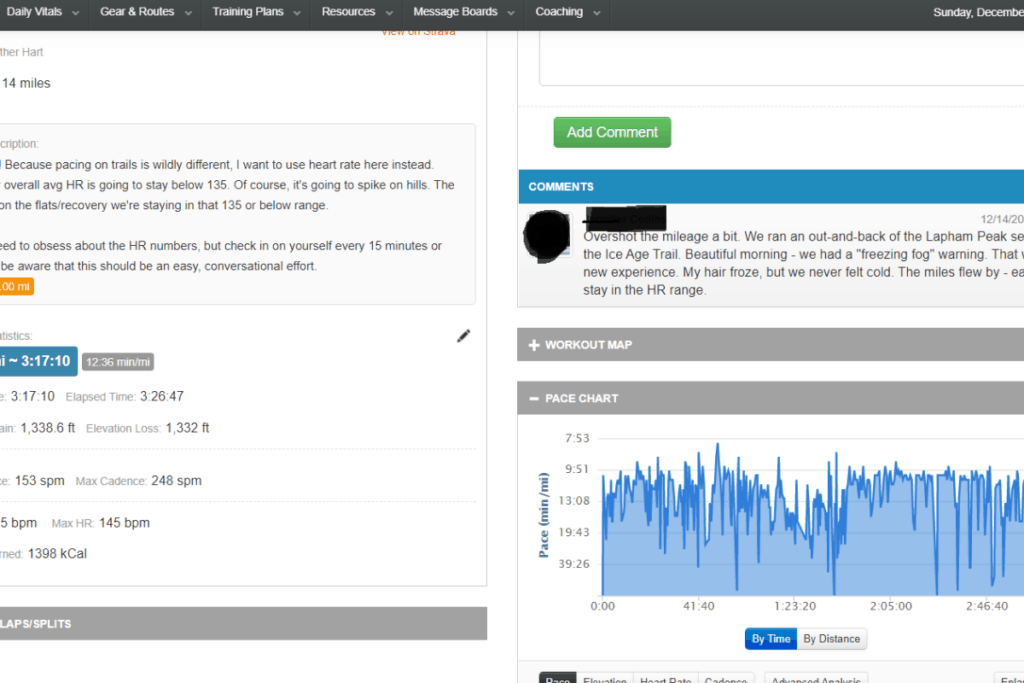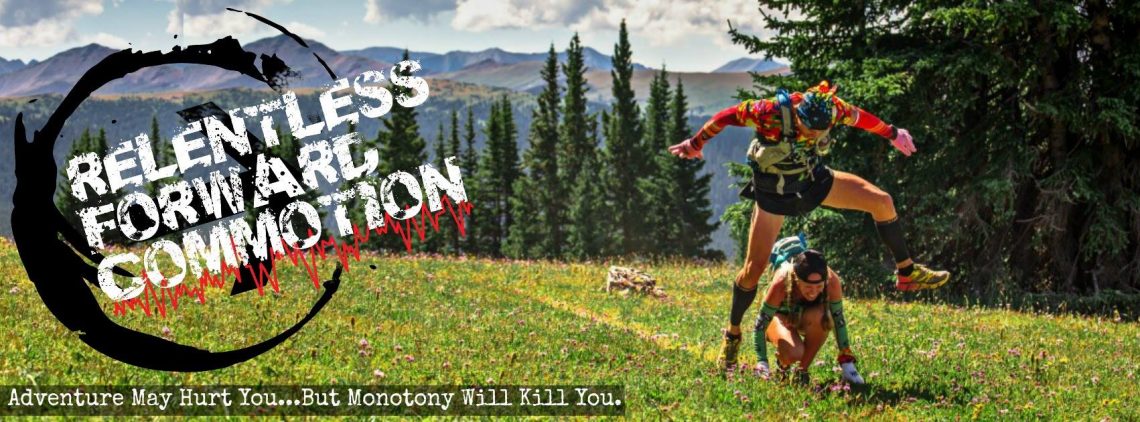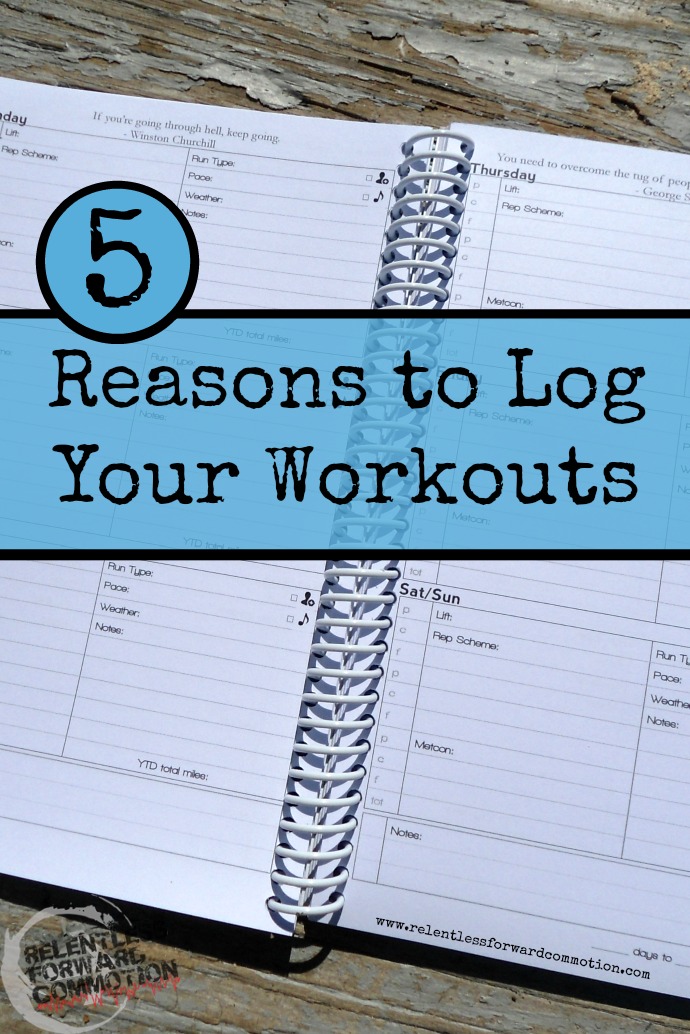Last Updated on December 22, 2019 by Heather Hart, ACSM EP, CSCS
A common question I hear from runners is whether or not they should log their running workouts, mileage and strength training sessions. It’s a great question. Personally, though I’ve been running for a decade, I’ve never really taken the time to write down the details of my workouts (other than the handful of times I actually log into Strava). Without fail, at the end of the year, I’ll have someone ask me how many miles I had run that year. And I’ll smile and say “I have no clue”, because I genuinely have no idea. My training varies from week to week and month to month based on whatever type of event I’m training for next, so I couldn’t even give it a best estimate.
And honestly, every time I end up wishing that I HAD logged my workouts. Kind of like this blog, it’s pretty cool to look back and see what I’ve done.

As a running coach to both new and experienced runners alike, I believe there are a number of reasons why tracking your miles, weights, and reps can be helpful. (Obviously, this is another classic Heather case of “do what I say, not as I do. Oye.) Here are 5 Reasons why you should log your running workouts.
5 Reasons to Log Your Running Workouts
Progression
This, in my opinion, is the number one reason to keep a training log, and so it gets the number one spot on this list. Two huge and unfortunately common mistakes I see both in the gym and in runners are those who increase their training volume in huge jumps, likely resulting in injury or burnout, and those who stay stagnant at the exact same weights/sets/repetitions/miles/speed/etc for months and months, and wonder why they aren’t seeing any progress.
The principle of progression, one of the seven main principles of exercise, states that overload of exercise should occur in gradual progression rather than in major bursts. Keeping track of your running mileage will allow you to analyze your running progression, as well as ensure that consistent, yet gradual gains are being made.
Injury Prevention
Though already mentioned above, injury prevention deserves it’s own category. As we just discussed, tracking your mileage, weights, etc. allows you to analyze your training progression.
But what about rest?
Rest days, as well as rest weeks, and even full “off” seasons are an integral part of successful training. In addition to ensuring you are making forward progress, analyzing a training log will allow you to make sure that you are taking adequate rest periods. Over training or running too many miles too soon can result in both acute and chronic injuries, as well as lead to a dreaded case of burnout.

Motivation
Maybe it’s just me, but there is something so satisfying about logging a workout. It’s almost like a little reward for accomplishing a small part of your goal. Similar to keeping a food journal, recording your running miles or logging your workouts will help motivate you to continue with your training plan.
Knowing that you must actually do your workout before you can record your miles, reps, or WOD, or alternatively be forced to leave the page blank, can be enough incentive to get you out of the door. I know it sounds silly, but many will agree with me here. Further, physically seeing the mileage and weight add up on paper is motivation to continue making progress with your training.
Trial and Error
After a particularly successful race, it is useful to have a training log to refer back to in order to see what successful training tactics were used. Alternatively, after a disappointing or unsuccessful race, a training log may reveal what errors were made during your training program.
This works just as well for a successful training cycle in the gym where you made gains, or perhaps a training cycle you struggled through. Having access to particular statistics and notes on your training will aide in building future training plans for upcoming running and racing success.
Preserve Memories
“Dear Diary, today was the worst run ever.” Sure, it sounds cheesy, but just like a diary, scrapbook, or photo album, a running log may help preserve memories from races or training runs. Keeping notes or photos in your log in addition to simply recording miles will help you to recall specific details of races or training runs.
Further, it’s pretty cool to be able to look back over the course of a year (or even ten years!) and see how far you’ve come with your training and racing.
How Should I Log my Running Workouts?
So now that we’ve got the pros of keeping a training log out of the way, the next question is “how do I start?” . First things first: you need somewhere to actually log your workouts. Here are some common options:
Paper Journal
In a world of computers and smartphone and apps as far as the eye can see, I am more often than not still a pen and paper kind of girl. And I know I’m not the only one.
If you prefer to track things with old fashioned handwriting, you have options. You can use anything from a 99 cent lined notebook you purchased at the office supply store, or you can buy a paper journal specifically designed to track running and/or fitness workouts.
Spreadsheet
Data nerd? Love a good spreadsheet? Me too! Using a spreadsheet gives you endless options of what training metrics you’d like to keep track of, and how you’d like to organize and analyze them. I even color coordinate mine based on progress, and how I felt that day.
Online Training Logs or Apps
There are no short of dozens of online training logs or apps that runners can utilize to keep track of their data. Many of them are even free, and give you some really neat ways to track and analyze your training stats. Some popular options include:

These websites and apps allow you to automatically connect your GPS watch, either via bluetooth or direct USB connection. Then, you can upload all of your data to be logged and ultimately stored. If you don’t use a GPS, you can manually enter your workouts as well.
What Sort of Data Should I Log?
Now that you have your “log”, you may be wondering exactly WHAT you should keep track of. This is definitely going to vary based on personal preference, but here are some important things you can write down:
- Date & time of day
- Distance
- Overall time & average pace
- Mile splits, if applicable
- Average heart rate
- How you felt
- Weather
- Any other important notes about the run. For example, you may want to note what you ate prior to the run, or during the run. Noting what shoes or other equipment worked – or didn’t work. Women, it can be helpful to track your menstrual cycle in regards to how it affects your training.
For a strength training or cross training workout, you’ll want to include weights, number of reps, and number of sets completed.
Of course, if you’re using one of the websites or apps mentioned above, most of this data will automatically populate on your dashboard once you connect your GPS watch with the app (or plug it into your computer). Then, you can simply add your notes.
In short, a workout journal can only benefit your training and racing goals. If you’ve never logged your workouts before, give it a try! You might be surprised at how much the data can help you improve your running and recovery!
Heather Hart is an ACSM certified Exercise Physiologist, NSCA Certified Strength and Conditioning Specialist (CSCS), UESCA certified Ultrarunning Coach, RRCA certified Running Coach, co-founder of Hart Strength and Endurance Coaching, and creator of this site, Relentless Forward Commotion. She is a mom of two teen boys, and has been running and racing distances of 5K to 100+ miles for over a decade. Heather has been writing and encouraging others to find a love for fitness and movement since 2009.


Theresa
I would log my cycling, miles walked/day and my workouts.
Melissa Berke
I started to track my workouts this year as well and I really enjoy looking back to see what I have done. This journal looks awesome, especially since I have been squeezing my comments into the box of a normal wall calender lol
Hannah Hawley (@sirenical)
I use my iPhone for all sorts of tracking but find that I like to keep a physical tracker as well.
Damon Jacobsen
Seems a good race and lifting log. My daily training is tracked by Runtastic and moving to FitBit
kc
Definitely my strength training. I don’t push myself hard enough and become sedate in the amount of weight I use.
Geoff Hart.
Mike Paul. I’m going to make sure he reads this.
Strength and Sunshine
I track my workouts in my google calander, but not the “specifics”.
Taylor @ Food Faith Fitness
I always, always log my workouts for these very reasons! How would I know if I am progressing, or something is just not working! Great post! Pinned!
Kerry
Last year when I was training for my first half ironman, I logged just the basics, but when I went back to look back to have an idea of to change to make this year’s training better I realized that logging I ran 6 miles on Tuesday didn’t help me any. So this year my goal is to track what each workout consists of. This journal looks awesome!
Pam
I have always used it to track my runs, but I can see where it would really benefit my XT as well 🙂
Mirjam
I like to keep track of my cardio, HIITs and weigh sessions.
Linda
Running, hiking, coaching couch to 5K event
Colorado Gal
I’d definitely track my running and CrossFit WODs. I always meant to track my workouts religiously, but truthfully, I suck at it!
Tina Muir
Yep! I am Allllllll about this! I have my training log online, and I dont know what i would do without it! It is great for seeing progression, and also looking back on what went wrong. That is what I mostly use it for. Great giveaway, and great thinking here 🙂
Coco
I am trying to log my runs but I am not good at remembering! I end up checking my FB and IG feeds a week later to see if I shared any details. 😛
Erika Whitney
That’s a lot of features…it’s a little intimidating, to someone who hasn’t ever logged her runs/workouts, and still considers herself a beginner, to think that there’s so much “involved” in logging them…but maybe there’s a beginner-friendly version on the website, since you said it walks you through the design process?
Monica Bruno
Great information, thanks for sharing!
Amanda I Chasing My Sunshine
I have always struggled with recording things, especially workouts, because it makes me feel so anxious when I miss a day. But I am getting a lot better at that sort of thing, so I’d like to give it a try again! it would probably behoove me to keep track of money too. 😉 Those journals are gorgeous!
jillconyers
I would track running, yoga and strength training. Very cool concept!
Nicki
I used to log my workouts on paper. I would all kinds of info down: distance, route, weather, how I felt, music or not.
Pam O
Keeping a journal helped me see that it wasn’t overtraining causing my ITBS issues – it has happening because of where I was running (on certain convex/high camber roads). I hadn’t really noticed a pattern until it was written down.
cindy
I would log my runs: distance, pace, music, weather, and my food and sleep for the previous day. I’d also log my weight training.
JennRDH
This. Is a great tangible way to not only stay organized, but also to keep yourself progressing in the right direction 🙂
Lindsey K
I’d record my mileage and strength training workouts.
Jess@Flying Feet In Faith
I’m on DailyMile currently, but have been wanting to transfer back to the old fashioned hand writing method. It’s more personal and I enjoy journaling!
Ashley Martin
This is just what I need. I’ve been struggling lately with my workouts and thing writing them down and beening able to look back on bad days would be so encouraging. I would track my running/miles and as someone new to the gym I would like to see my progress in my strength training too.